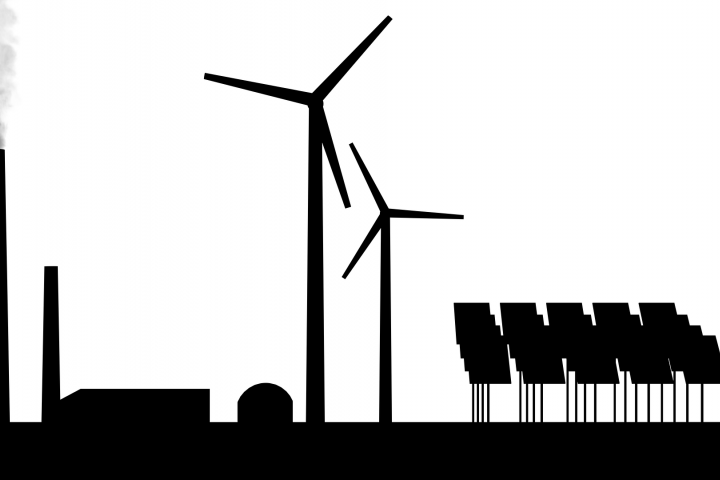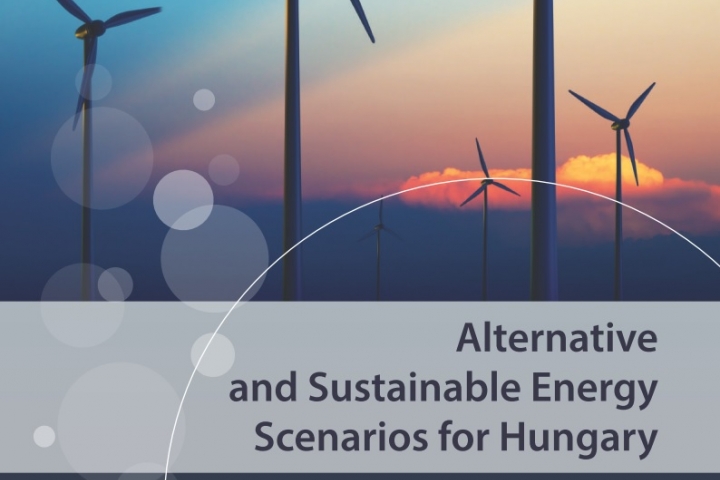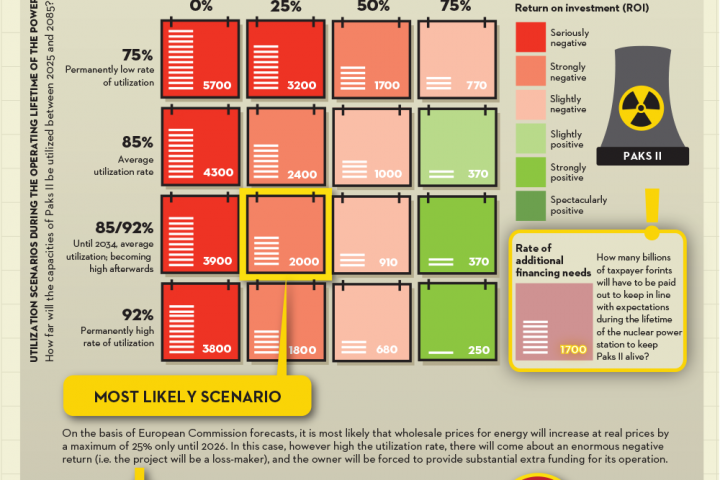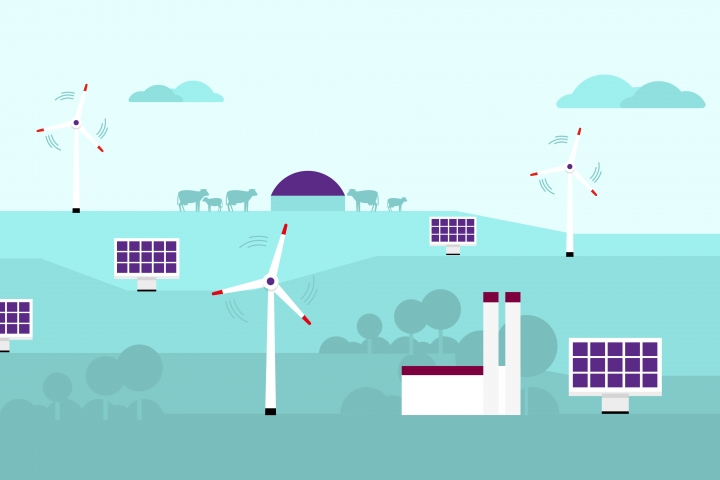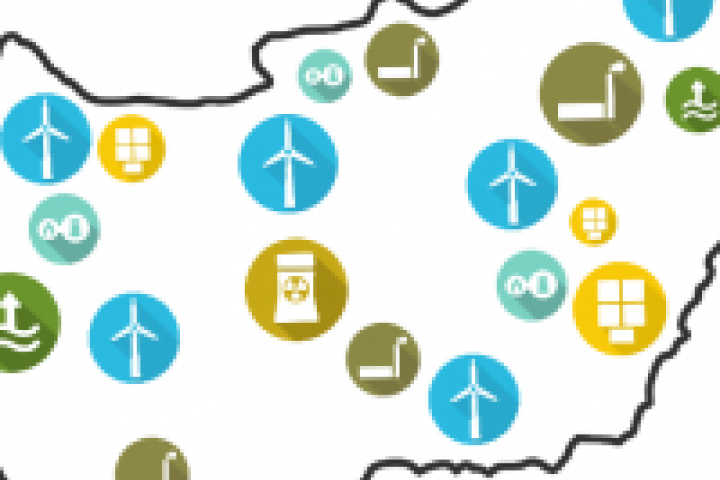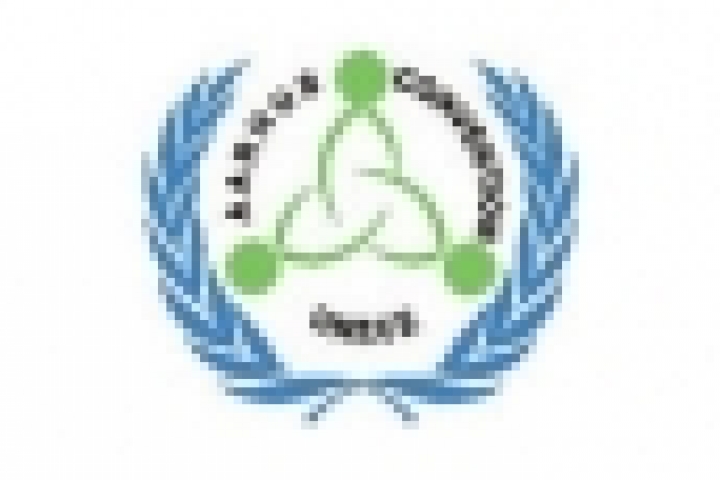The Paks Diaries - January 2024
Energiaklub has launched a series of blog articles to provide monthly overviews of what is happening with the Paks II project, which the Hungarian government wants to accelerate, and the lifetime extension of Paks I NPP.
On 14 January it was just over 10 years since the Paks II project "took off" - the day Vladimir Putin and Viktor Orbán signed the contract in Moscow in January 2014. János Lázár, then Minister of the Prime Minister's Office, described the deal as the deal of the century, but since then it has emerged that the Russians only offered the Hungarian government the same contract terms (construction, lending and technological solutions) that they offered elsewhere in the world (most recently to Egypt, but also previously to Bangladesh, as mentioned in a 2022 Energiaklub study "Nuclear power plants under construction").
The main contractor for the construction of the new 2x1200 MW nuclear power plant is Rosatom, 80 percent of the construction cost (up to €10 billion) is covered by a Russian government loan, and one of the units was scheduled to be operational by 2025. This was the promise at the time. Almost none of which has been fulfilled so far. And, as reported in the December Paks diary, it is not only a question of whether Russia, isolated from Europe because of its war in Ukraine, can build such 'sensitive infrastructure' in any EU member state, but there are also such everyday uncertainties as whether the Russians can replace the mostly Ukrainian specialist welders who used to work on Rosatom projects.
The anniversary of the Paks II contract was not covered by the government media and it was largely ignored by the entire Hungarian press. A long, analytical, documentary article published in Szabad Europa was the exception: it summarised the series of promises and failures made in connection with the planned nuclear power plant, and provided an insight for readers who had not paid attention to the subject.
The extent to which the Hungarian government remains a prisoner of nuclear power is shown by the fact that the Minister of Energy also spoke about Hungarian nuclear power at the end of January, at the inauguration of a solar park. He said, half of the energy demand of Hungary in the 2030s will be covered by Paks I and Paks II. (Neither the date, nor the envisaged split of production, nor anything else specific about the following decade was mentioned.)
Following the ten-year anniversary, 24.hu invited Attila Aszódi to a podcast. The former government commissioner and former state secretary said that the construction is progressing well and "even if there were doubts on the part of the government, they have now become groundless". He said he believes the 2032 reactor start-up is realistic because the project is "in the actual construction stage" and the main contractor has promised to start building one of the reactor vessels in Russia in February. However, in spite of Aszodi's conviction:
-
the authority (HAEA) has still not granted a permit for the construction of the power plant, therefore only works not closely related to the construction of the NPP are carried out in the area - at the investor's own risk. (The often-cited gap wall, for example, is more to ensure the stability of the existing Paks nuclear power plant, and in the excavation area, where currently a depth of 5 metres has been reached in one part, it will take years of work to reach the required depth.)
-
the production of the main unit in Russia is not in itself part of the construction of the nuclear power plant, and it is constructed at the risk of the contractor. It is worth remembering that when a 330-tonne steel block was dropped from several metres during the installation of the first reactor vessel in Belarus, its replacement was eventually solved with the reactor vessel from the failed project in Kaliningrad, which was gathering dust in a warehouse.
Aszódi admitted that it could be problematic to supervise production in Russia (especially because of the difficulties of travelling to the country) and that the Paks project has not yet reached the point of no return. The main question, according to the nuclear industry expert, is how the 8-10 years usually required by a Russian project will be modified in a sanctions-ridden environment. However, the project continues to face a number of challenges. It may be telling that although the HAEA President, Andrea Kádár, visited the project site in January, no news, announcements, promises or pledges were reported, apart from the HAEA's not-so-informative report recording the fact of the excavation inspection and that the President had spoken to Gergely Jákli, CEO of Paks II Ltd.
In mid-January, the investigative journal Átlátszó reported that it is in court to obtain the Paks II permit documents, and that there is no consensus between Hungarian and Austrian experts on the tectonic fault lines discovered in 2017. (Only the Austrian side has officially provided information on the bilateral Austrian-Hungarian discussions, but they have so far requested in vain that Hungary carry out more detailed paleo-seismological studies before the project is allowed to proceed. The Austrians say the earthquake risk in the Paks area is real.)
In January, the operating Paks nuclear power plant was also in the news: Szabad Európa wrote about the sudden reactor shutdown over Christmas and the combination of problems with production losses that stretched into January 2024. The analysis also drew attention to the fact that from February this year, the Hungarian electricity system will enter a period in which three of the four units will undergo major repair and maintenance one after the other. The risk is that, as has happened repeatedly in recent years, if one unit is not yet repaired and the other has to be shut down, not one (500 MW) but two units will be missing from the electricity system, further straining the already not so rosy import situation (the import rate of electricity exceeded 40 percent in December 2023 and January 2024, when only one Paks unit had minor problems).
The December ‘Paks diary’ reported in more detail on the lifetime extension of the Paks nuclear power plant beyond 2032, initiated by the government and MVM. MVM's latest cost estimate suggests that the budget needed to ensure the continued operation of the four units for a second time could be 1.5 billion euros. The budget seems to be increasing: it had been estimated at €1 billion some months before. Interestingly, the US government has awarded $1.1 billion for the lifetime extension of the Diablo Canyon power plant in California. The two-reactor nuclear plant, which was supposed to shut down in 2025 under an agreement reached years ago, apparently will not. However, the lifetime extension would be for only 5 years, to which the US government will contribute $1,100 million.
Energiaklub continues to oppose the Paks II project, which is based on an outdated and expensive technology involving environmental and geopolitical risks and would tie down the Hungarian energy system in a constantly changing era full of technological innovations. Nuclear energy should be phased out in Hungary after the lifetime extension of Paks I. The lifetime extension can only be accepted if it fully complies with sustainability, economical, nature protection and energy security principles. If extended, it must not be used as an argument or coercion against the expansion of renewables becoming a strategic priority
